 Food, drink, and very good company will be available from 19.00 at the Pitchside Bar courtesy of our sponsors PeopleCert.
Food, drink, and very good company will be available from 19.00 at the Pitchside Bar courtesy of our sponsors PeopleCert.
Please do join us there if you arrive on Sunday – we’d love to meet you before the busy conference agenda commences and it’s a great opportunity to network with industry colleagues.
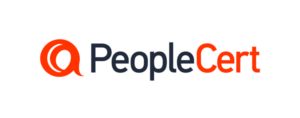
No workshops in this session.
No workshops in this session.
itSMF UK Chair Claire Drake welcomes attendees and discusses recent developments in service management. Followed by Graham McDonald and Mark Lillycrop who will provide an update on itSMF UK member services and preview the conference.

Julian Fisher is an intelligence specialist with decades of operational experience, in the private and public sectors. He starred in Channel 4’s show Spies as one of the lead trainers/assessors. He is also the author of ‘Think Like a Spy: Master the Art of Influence’ and ‘Build Life-Changing Alliances’. In this book, Julian explains how readers can apply the nine secret skills of espionage to help them achieve their personal and professional goals.
After a short career as a City Economist, Julian joined the UK’s Foreign Service working across Africa and beyond, before moving into the private intelligence business. Amongst other adventures, he has been invited to help plot a coup in a West African country (he declined!), intercepted camel-rustlers on a drive across war-torn Somalia and worked with security agencies in South Sudan to help prepare the country for independence.
A specialist in the ‘people’ side of intelligence, Julian talks about what companies and individuals can learn from this world to enhance their effectiveness and productivity, focusing on leadership, interpersonal skills, motivations and influence.
No workshops in this session.
Gary MulQueen, Operational Resilience Manager - Ministry of DefenceTrack 1
Operational resilience is critical for organisations because it ensures the ability to adapt, withstand, and recover from disruptions whilst maintaining essential operations and delivering key services. It’s not hard to imagine how vital this is for the Ministry of Defence, in ensuring the Armed Forces have the tools they need to defend the realm.
Catering for services adopting traditional Waterfall methods alongside those employing Agile and DevOps styles of delivery, we have removed obstacles so that non-functional requirements are considered as important as the functional elements of service. We can now assure services against their operational resilience obligations in increasing numbers but with fewer resources, whilst not increasing time to service.
This session will outline a case study, with learning opportunities, from Defence Digital’s Operational Resilience lead, Gary MulQueen. Gary is a crown servant with a plethora of experience in both industry and government departments who is on a personal mission to remove templates and a one-size-fits-all approach to availability management, capacity and performance management, and service continuity management.
He will outline the strategy he implemented to answer all of these questions together with providing practical examples to help others address these issues and reinforce how none of this can be achieved without considering demand.

Nigel Hopkins, Service Management Leader - IKEA IT ABTrack 2
In this session, we will be covering the use of value streams and value-based thinking in transforming IKEA's service management approach - using value-based thinking to bridge between our DevOps engineering teams and our ITIL-based service management.
The approach is also being leveraged to help get the most out our recent reorganisation of our service management area, with the majority of IKEA employees being moved to another company which now provides the operational service management support.
Additionally, we will cover the reorganisation of the service management team remaining in IKEA, and we'll also talk about the use of gamification during the journey.

Duncan Watkins, Principal Consultant, Team Lead - ForresterTrack 3
An increasing number of organisations are struggling to address technical debt. But as many start on this journey, they don't really understand how to approach the challenge holistically.
This session shows how the right business strategies will help you operationalise your technical debt management.

Roy Atkinson, CEO - Clifton Butterfield, LLCTrack 4
During a time when brick-and-mortar stores seemed to be going completely out of fashion, the American bookstore chain Barnes and Noble has performed a remarkable turnaround, adding 57 new stores in 2024.
Even through the height of the COVID pandemic lockdowns, Barnes and Noble continued to gain traction, and leveraged reduced real estate occupancy to its advantage. The story of this success began in the UK at a store called Waterstones, where James Daunt had accomplished a turnaround.
His philosophy was considered counter-intuitive, dispensing with high-margin items like toys and focusing on books. Daunt stopped accepting promotional money from publishers. Local managers were given more autonomy, and stores were made more inviting for clientele.
For a long time, service management seemed to lose touch with its constituency, focusing on processes and practices rather than practical business outcomes and the experience of service consumers. We can learn a good deal from the success of Barnes and Noble about how we can leverage experience management and focus on value to produce greater service management success for the organisations we are part of.
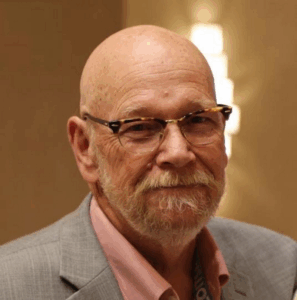
Francesco Barba, Senior Process Manager - GLEIF & Jan Dix, Co-Founder & Head of Software Development - &effectTrack 1
How do you manage SLA monitoring with only one person?
Beyond simply monitoring compliance of partners, an automated intraday SLA dashboard efficiently supports with pinpointing bottlenecks, streamlining feedback to breaches, ensuring rapid recovery, and providing a seamless way to contact support teams when needed.
Partners can effortlessly track their performance, and the SLA dashboard enables them to quickly analyse any breach of agreed targets with just a few clicks, and keep track of both current and past escalations triggered for follow-up actions.
Follow us on our journey to efficient service level and reporting management.

Shilpa Susan Thomas, Governance Specialist & Rashmi Gunalan, Senior Project Lead - Allianz SETrack 2
This session considers how organisation management underpins governance, ensuring structured decision making, risk mitigation, compliance and operational efficiency.
We also discuss how, when regulatory topics have a high focus (DORA, VAIT etc), organisation management plays a key role in connecting the expert functions.

Roman Zhuravlev, ITIL Architect - PeopleCertTrack 3
Digital products are everywhere, from business to our smartphones. Product teams, product managers, and product owners are in nearly every organisation.
Is product management an evolution of ITSM? Is it a better alternative? What do they have in common and what are the differences?
And most importantly, how do we manage digital products and services to ensure value for the organisation and our customers?

Mark Boyer, Service Operations Director - SoftcatTrack 4
ITSM, crucial as it is for successful business operations, rarely offers at direct path to the C-suite. Perceived ‘technical’ leaders are filling roles like CIO or CTO, while ITSM leaders are sidelined.
A recent report revealed only 15% of ITSM leaders felt their roles were critical to strategic decision-making, despite over 60% of CIOs/CTOs citing innovation and strategic alignment as key reasons for their appointment.
The main challenges are:
* Perception of ITSM as operational rather than strategic, leading to an underestimation of its contribution to business transformation.
* Focus on stability over innovation, as ITSM leaders are often associated with maintaining the status quo.
* Over-reliance on metrics that don’t translate into business outcomes like revenue growth or market expansion.
* Lack of advocacy at the top, as ITSM leaders struggle to highlight their work’s alignment with organisational goals.
To break through, ITSM leaders can advocate for their roles, highlight their strategic impact, and focus on metrics that align with business outcomes. They need to focus on how ITSM generates revenue, optimises costs, and retains customers, translating operational achievements into business outcomes.
ITSM leaders have the tools and expertise to thrive in the C-suite, but they need to reframe their narrative, focusing on strategic contributions and amplifying their achievements.
This session considers how to achieve this.

Collect your lunch in the networking area and join the conversation with other delegates.
Nigel Murphy, Process Enablement & Governance Manager - FujitsuTrack 1
Embracing the way in which pilots train, rehearse and manage in-air incidents, this session applies some of the lessons learned in aviation to major incidents across IT.

Shameem Akhtar, Technology Manager - WM Morrisons SupermarketTrack 2
This session focuses on transforming change management by integrating DevOps culture with modern ITSM tools within the ITIL framework.
We’ll share real-world examples and practical case studies to show how blending agile DevOps practices with advanced ITSM capabilities can simplify complex change processes, reduce errors, and accelerate outcomes. Attendees will discover actionable strategies to bridge traditional IT service management with innovative, technology-driven approaches, ensuring effective compliance without unnecessary complexity.
Key takeaways include streamlining processes, harnessing tool functionality, and fostering continuous improvement across diverse tech cultures.
This presentation is designed for ITSM professionals eager to adopt cutting edge methods that not only enhance operational efficiency but also create a more adaptable and collaborative change management environment.

Aaron Perrott, CTO - KTSLTrack 3
AI is being implemented across ITSM, from generating knowledge to correlating events and enhancing chat; but where will it change ITSM next?

Katrina Macdermid, Co-Founder Director - HIT GlobalTrack 4
IT service management has long excelled at ensuring IT systems are secure, reliable, available, and cost-effective. These frameworks provide essential structure, governance, and efficiency—ensuring stability in complex IT environments.
But while these frameworks emphasise the need to be customer-focused, they don’t provide guidance on how to design services that work for users, reflect an understanding of their real needs, and make processes and systems truly user-centred.
This is where the HIT Global Double Diamond Framework (HITDDF™) comes in. It complements ITSM frameworks, helping IT professionals take a human-centred approach to IT service delivery, and balancing structure with experience.
In this session, we’ll explore how leading service-based industries create experiences that IT can learn from, consider the real meaning of human-centred design, decide what ITSM excels at, and explain how HITDDF complements our existing frameworks.
ITSM has always been about service—now it’s time to include the experience.

Andrei Spiridon, Service Governance & Reporting Manager - Square EnixTrack 1
Tired of theoretical discussions about 'shift-left'?
This session provides a real-world case study of how we implemented a holistic shift-left strategy, achieving measurable success across our service management ecosystem.
We'll detail our journey of strategically transferring tasks from L3 to the service desk and, crucially, to the users themselves through intelligent automation and self-service.
Learn how continuous analysis and performance metrics fuelled a self-sustaining cycle of improvement, inspiring teams to autonomously embrace shift-left initiatives.
Gain practical insights into how to replicate our success and optimise your service delivery.

Faith Thomas, Lead IT Service Management Practitioner - University of BirminghamTrack 2
Navigating the workplace can be particularly challenging for neurodiverse individuals. Interestingly, certain industries like IT seem to attract a higher number of neurodivergent minds.
In this presentation, I'll share my personal journey as a late-diagnosed neurodiverse woman in ITSM. You'll hear about my experiences and the transformative impact of introducing agile practices into our service management approach.
We'll delve into how agile service management can significantly boost the productivity and well-being of neurodiverse individuals, especially those with ADHD.
By embracing flexibility, adaptability, and collaboration, we can create environments that play to the unique strengths and address the challenges of neurodivergent minds.
Key topics include:
• a brief overview of neurodiversity and ADHD from my perspective.
• the principles of agile service management and their relevance to neurodivergent individuals.
• practical strategies for implementing agile practices to support ADHD.
• tips for fostering an inclusive and empowering workplace culture.
Stay tuned until the end, where I'll reveal my top five 'hacks' for ADHD success in service management!

Details TBC soon.Track 3
Details TBC soon.
Chris Kingsbury, Service Advisory Consultant - CGI IT UK LtdTrack 4
Service management and SIAM (Service Integration and Management) rely heavily on the intricate web of data interactions that occur across multiple parties. Whether leveraging asset information to enhance operational practices or building a solid foundation for decision-making, data is at the core of these processes.
But are we overcomplicating things?
In the era of big data, it's all too easy to get caught up in collecting every piece of information available, often without evaluating its relevance or utility.
This session challenges the status quo, asking: do we truly need all this information?
Join us as we dive into practical strategies and proven techniques to qualify and evaluate data, illustrated by examples from our clients, focusing on what truly matters. This session will empower attendees to identify and prioritise useful information, streamline their data management practices, and ultimately enhance their service delivery and integration efforts.
Key takeaways from this session include:
• understanding the role of data in service management and SIAM;
• techniques to distinguish essential data from excess information; and
• strategies for building a solid data foundation that supports efficient practices.
Whether you're a seasoned professional or new to the field, this session will equip you with valuable insights and actionable tools to navigate the complexities of big data in service management.

No workshops in this session.
Emma Wood, Senior Manager, IT, Europe and Asia - STEMCELL TechnologiesTrack 1
This session will challenge you to rethink the traditional output-focused ITSM people leadership model, advocating a shift towards leading with compassion.
We will explore what 'leading with compassion' means and discover practical strategies, such as regular wellbeing-led check-ins, to build resilience and sustainability within your ITSM team.
Learn implementable techniques to create a culture of psychological safety, balanced workloads, and leveraged technology to support team members' well-being, improving performance and staff retention.

Andrew Hardwick, End User Services Operations Director & Katie Morlino, Service Solutions Director - ArcadisTrack 2
Everyone is talking about chatbots and how AI will deliver improved service desks and customer experience in the coming years.
This is Arcadis’ journey of implementing their chatbot, getting it wrong and then making it a success.
We'll talk about finding our direction, what we wanted to achieve, how and when. Our story is about how not making a success of it first time, taking a step back, seeking guidance and inspiration from others, and bringing together the right team, ultimately allowed us to succeed. This is supported by 5% of tickets logged via chatbot and an improved MTTR and CSAT.

Details TBC soon.Track 3
Details TBC soon.
Martin Goble, Engagement Director - Tata Consultancy ServicesTrack 4
Organisations regularly undergo IT transformations, driven by internal or external factors, top down or bottom up; but what most of them have in common is that they seldom start from a blank canvas!
In this session I will discuss some of the challenges we face when transforming service management to keep up with changing business needs. From tooling to culture, DevOps to difficult vendors, I will discuss the problems encountered and how we have managed them.
You will hear how to develop and realise a pragmatic plan for optimising your service management practices, no matter where you are starting from.

Sean Auckland, Operations Design & Reliability Senior Manager & Jason Hamer, Service Management Architecture and Governance - VodafoneTrack 1
The Unified Service Model is a strategic initiative aimed at standardising and simplifying service management across Vodafone.
This model focuses on creating a cohesive framework that integrates various service layers, including business, functional, and technical services. By providing a unified approach, it enhances support for IT operations and observability, ensuring consistent and efficient service delivery.
This alignment with Vodafone’s global standards allows for flexibility in local market adaptations.
The D&IT Asset Inventory programme complements the Unified Service Model by creating a unified view of all digital and IT assets across Vodafone. By integrating multiple data sources into a single data lake, the programme improves data quality, avoids asset duplication, and provides comprehensive insights. These insights support various use cases, including incident management, lifecycle management, and compliance with telecoms security regulations.
Together, these initiatives drive significant value for IT teams.
The Unified Service Model streamlines service management processes, while the D&IT Asset Inventory ensures accurate and timely data for effective asset management. This synergy enhances Vodafone's ability to deliver consistent, high-quality services, ultimately improving operational efficiency and regulatory compliance.
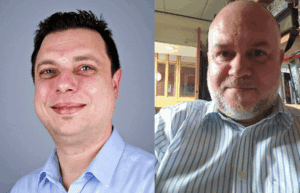
Sam Heasman, Head of Service Design - King's College London & John Sansbury, Service Management Guru - ESMi LtdTrack 2
Interest in enterprise service management is growing exponentially.
In this presentation, John Sansbury and Sam Heasman will describe the steps that King's College London are taking to achieve service excellence using ESM principles and practices.

Lee Young, Leeds Building Society & Keith Laughlin, FreshworksTrack 3
IT service desks must do more than just fix issues - they must deliver exceptional employee experiences that drive real business impact. Join Leeds Building Society and Freshworks as they reveal how they built an employee-centric IT service desk that puts internal users at the heart of everything they do.
This session explores how Leeds Building Society transformed their ITSM approach by redesigning processes and tools with a relentless focus on accessibility, usability, and user feedback. Through extensive user experience and acceptance testing, they created a service desk that not only meets technical needs but truly delights users.
Learn how the teams gathered, prioritised, and acted upon user feedback to continuously improve services, resulting in smoother transitions, higher satisfaction, and measurable business benefits. Discover practical insights and best practices on embedding feedback loops and delivering IT services that empower employees and drive organisational success.
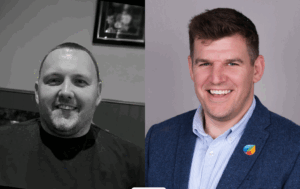
Paul Brandvold, Manager Customer Operations - CegalTrack 4
Service Request Management (SRM) is often overshadowed by incident and problem management in ITIL adoption. However, SRM holds immense potential for enhancing operational efficiency, improving user satisfaction and driving measurable value.
This session will uncover why SRM deserves more attention, address common implementation pitfalls, and share actionable strategies for maximising SRM outcomes in real-world environments.

Rob Akershoek, IT Management Architect - The Open GroupTrack 1
Let's face it: IT is a mess!
The current system is not designed to support and optimise the digital experience of our IT employees. Despite our best efforts to implement new practices like DevOps and Agile development, and to invest in new tools, we still have suboptimal value streams and poor employee experience.
It's time to rethink how we enable our IT employees to do their work. Fortunately, there's a growing focus on human-centric design in IT processes and ITSM tools. By prioritising user experience, we can simplify processes, make tools easier to use, and ensure that the right information is available to support our employees.
A prime example of this is the increasing attention to supporting developers through self-service, known as the developer journey.
However, we have never designed and architected our end-to-end IT operating model from an employee perspective. Most organisations even lack an architecture of their IT management processes and tooling landscape, which includes project management systems, DevOps tools, ITSM systems, monitoring tools, reporting systems, and documentation scattered across various repositories.
So, how do we optimise the end-to-end journeys of IT employees? How do we enable our employees to make the right decisions with the right information at their fingertips? How can we simplify our processes and provide the right tools in an integrated manner?
Join Rob’s presentation on fixing the IT operating model by creating a more holistic approach to support our IT employees in the best way possible.
Let's fix the system, not the people! Discover the life-changing magic of tidying up IT!

Michelle Major-Goldsmith, Principal Consultant Service Integration & Simon Dorst, Director Service Management Education - Kinetic ITTrack 2
The SIAM Bodies of Knowledge were first published in 2016, with a refresh in 2020. Since then, the digital landscape has evolved significantly, bringing new working practices, emerging technologies, shifting business priorities, and an increased focus on human-centric considerations.
In 2025, the global SIAM Community is undertaking a comprehensive update of the SIAM Bodies of Knowledge to reflect these changes. This refresh not only reinforces the core principles of service integration but also introduces a forward-thinking structure designed to adapt and evolve for the future.
Join lead architects Michelle and Simon as they share insights into this major initiative. Discover what SIAM has to offer in 2025 and how these updates continue to support organisations navigating the complexities of modern service management.

Chevonne Hobbs, Senior Manager IT Consultant - Illuminet SolutionsTrack 3
AI can be used in a magnitude of areas, but knowledge management is one place it can really assist. Trying to navigate and locate information within an organisation is painstakingly difficult. You might be surprised to hear that 47% of digital workers can’t find the information they need to do their job.
Similarly, the majority of digital workers are held back due to constrained knowledge silos leading to poor decisions, misinformation and the inability to perform their duties. This is where AI platforms demonstrate real value.
This session won't seduce you into thinking the task will be easy, but it will help you understand the steps you need to consider in terms of tool capability, the effort involved and what will be needed to maintain the knowledge management systems you’re going to implement using AI at their core.
The message is a positive one, and will help transform the way you work in the future, forever.

Barclay Rae, MD, Author, Consultant & Steve Cave, IT Service Management Consultant & Auditor - Barclay Rae ConsultingTrack 4
There are many converging models and approaches that are used now for service management and these are all useful and valuable.
A Target Operating Model (TOM) is a great way to visualise and socialise the strategic and operational aspects of how we work and what transformation will provide.
In this session Barclay Rae and Steve Cave provide practical examples of using TOM as a key tool for development and success , with client examples and stories.

Reflect on the day's sessions over a drink with other attendees.
No workshops in this session.
Join this year's award nominees at our gala dinner, where we highlight the achievements of IT service management individuals and teams, whose skills, commitment and imagination have marked them out for special recognition.
Sponsored by 
No workshops in this session.
No workshops in this session.
No workshops in this session.
 Nominations are now open for this year’s ITSM Team of the Year, Service Innovation, Young ITSM Professional, and Ashley Hanna Contributor of the Year awards - see the website for more information. The winner in each category will be announced at our gala awards dinner on the Monday evening of ITSM25, an outstanding evening of celebration and entertainment.
Nominations are now open for this year’s ITSM Team of the Year, Service Innovation, Young ITSM Professional, and Ashley Hanna Contributor of the Year awards - see the website for more information. The winner in each category will be announced at our gala awards dinner on the Monday evening of ITSM25, an outstanding evening of celebration and entertainment.
This year’s award dinner special guest is Mark Watson, one of the UK’s leading live comedians, as well as a writer, producer, and director. Nominated twice for the main Edinburgh Comedy award (and winning it the second time), Mark’s brand of intelligent observation, friendly banter, and endearing frustration with the world engages and entertains in equal measure.
A TV and radio regular, Mark has appeared on almost every panel show going from Have I Got News… and Mock the Week to 8 Out of 10 Cats and Would I Lie To You. He has also appeared on This Week, Live at the Apollo, Taskmaster, and celebrity editions of Mastermind, Pointless and Bear Gryll’s Celebrity Island.
He travelled around Brazil with fellow comic Henning Wehn on a football odyssey in Road to Rio, hosted his own surreal take on the celebrity game show in We Need Answers, and fronted sports panel show Mark Watson Kicks Off. On radio, he’s a regular on Radio 4 panel shows, and hosted two series of Mark Watson Makes the World Substantially Better, as well as series of Mark Watson’s Live Address to the Nation and Mark Watson Talks About Life.
No workshops in this session.
No workshops in this session.
No workshops in this session.

Annette Andrews is a leading people and culture executive with over 30 years of experience with companies including Lloyd’s of London, Lloyds Banking Group and Ford. A coach, mediator and experienced human resources officer, she considers how organisations and leaders need to adapt to new expectations from employees and the fundamental changes in leadership style and culture this brings.
Annette has worked with CEOs, boards and senior leaders on a global basis in highly regulated organisations and during some of the most challenging periods in their histories. As Chief People Officer at Lloyd’s of London insurance market, she worked closely with CEO Inga Beale to radically change a complex, deep-rooted and outdated working culture. Throughout, her work has been to ensure that people and culture are integrated into business strategy and on the agenda at the top table.
Passionate about supporting individuals and organisations to achieve their full potential, she explores what attracts talent and the supporting culture and practices that need to be in place to retain them. The golden thread that runs through her work is diversity and inclusion. Along with these key factors, she looks at what technological, social and industry changes have to say about employees and employers of the future.
Agnieszka Bochacka, Head of P3MO - Lotte WedelTrack 1
Everyone wants digital transformation, yet most companies stumble.
Why? Because they treat it as a tech upgrade, not a fundamental shift in strategy, culture, and execution.
In this session, we’ll break it down:
* the biggest transformation failures – what went wrong and why;
* the game-changers – the strategies that turn chaos into success;
* the ITSM factor – how structured service management keeps transformation on track.
We’ll expose the common traps—lack of strategy, cultural resistance, security blind spots—and show how to make digital transformation work without breaking your business.

Cristan Massey, Head of IT Service Management - Pearson PLCTrack 2
We work in an industry where we wear multiple hats. We have many roles, practices, and frameworks. The backlog of work is never empty. Our ambition means we are always aiming higher.
When does it shift from being healthy to posing both an individual and operational risk?
This session will explore cognitive load in the world of ITSM, the differences between intrinsic, extraneous and germane loads. We will share best practice and industry insight from a team perspective, look at tools for managing loads when it all gets too much and, most importantly, consider why cognitive load is more important in ITSM than other areas of the business.

Akshay Anand, Principal Solutions Engineer - Atlassian UK & James Finister, AI EthicistTrack 3
Shadow AI, much like Shadow IT, poses significant challenges from a governance and risk management perspective.
While Shadow IT involves the use of unauthorised technology within an organisation, Shadow AI represents a more dangerous frontier. The potential misuse of Shadow AI can have severe consequences, including the leakage of company intellectual property and the incorrect processing of tasks (which in turn can have legal, socio-economic and human impact).
Despite these risks, the covert use of AI continues to rise.
In this session, Akshay and James will explore the parallels between Shadow IT and Shadow AI, drawing lessons from our experiences with the former to develop strategies for managing the latter. They examine the specific implications for ITSM teams, focusing on how the unauthorised use of AI technologies impacts their operations and responsibilities.
They will share actionable insights for mitigating the risks associated with Shadow AI and ensuring robust governance frameworks are in place.
P.S.: This abstract was drafted by an unauthorised AI 😉

Paul Wigzel, Service Management Capability Lead - QATrack 4
Over the past year, millions of people worldwide have been affected by high-profile business disruptions - service outages, upgrade failures, service breakdowns/interruptions/infiltrations. These ‘situations’ often get labelled as “tech issues”… but are they really?
This session challenges that narrative, exploring how skills gaps - especially in service management, business relationships and customer experience - often sit at the heart of the problem. If you’re serious about business resilience, don’t just fix problems - prevent them - with skills, knowledge and life-long learning.
No workshops in this session.
Neil O'Reilly, Service Assurance Lead - PrimarkTrack 1
This session offers an overview of our journey to date to consolidate SIAM and major incident management teams, spanning multiple vendors and operating in a complex and dynamic environment, into a single global SIAM function.

Katie Trayers, Continual Service Improvement Manager - Livestock Information LtdTrack 2
In an increasingly remote (ITSM) environment, fostering a culture of Continuous Improvement (CI) is both essential and challenging.
This session will explore practical strategies for embedding CI into remote ITSM teams, ensuring service excellence and long-term efficiency.
We’ll examine key CI techniques such as Root Cause Analysis (RCA) to drive sustainable problem resolution, virtual Gemba walks to maintain real-time service visibility, and effective stakeholder management to secure leadership buy-in and cross-functional collaboration.
Attendees will gain insights into overcoming the limitations of remote work by leveraging digital tools to implement CI, fostering a proactive mindset on how to gather ideas remotely, and embedding CI principles into daily operations.
Real-world examples will illustrate how high-performing ITSM teams continuously refine processes, enhance service reliability, and drive operational excellence, regardless of location.

Doug Rabold, Chief Experience Officer - Bold Ray ConsultingTrack 3
Experience Level Agreements (XLAs) are all the rage. They have been at the crest of the hype cycle for the last few years. Everyone is talking about them.
Most ITSM practitioners now know what they are. Many know how to develop them. Some have implemented them. A few have realised genuine experience improvement from them.
However, one of the unfortunate truths – as with many new approaches and emerging methodologies – is that what they ARE NOT is far too often overlooked. This simple fact leads to poor design and implementation, which can result in perceived failure. And as the saying goes, “You only get one chance to make a first impression.”
Join multiple award-winning CX thought leader and influencer, Doug Rabold, for this session - derived from multiple XLA implementations - which serves as a cautionary tale about the flip side of XLAs: what not to do or expect.
Learn from the experience of others so you can avoid the potential pitfalls in the design and implementation of XLAs.

Conor Horgan, Consultant & Dr Clive King, Consultant - Kepner-Tregoe LtdTrack 4
Dopamine, the brain’s 'feel-good' chemical, drives pleasure during social interactions, rewards, or praise.
While natural, this response creates vulnerabilities in even the most secure IT ecosystems. Cybercriminals exploit human psychology, targeting our desires for connection, recognition, and instant gratification.
This presentation explores the human side of cybersecurity by engineering the performance system: understanding individual behaviours, responses, consequences, and feedback loops. Drawing on real-world experience, we discuss how to shape a security-conscious mindset by addressing the interplay between human psychology and cyber threats.
Cybersecurity extends beyond online training; it requires fostering a robust culture that prioritises long-term resilience over short-term dopamine-driven decisions.
This talk offers actionable insights into building an environment that promotes secure thinking, empowering individuals to resist instant rewards and contribute to a stronger organisational defence.
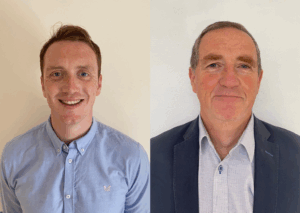
Ian Porter, Major Incident & Problem Mgmt. Process Owner - Nationwide Building SocietyTrack 1
This session will cover…
1. the steps we took to refresh our approach to major incident reviews, laying the foundations for success and establishing responsibility for the end-to-end process, from incident identification to resolution of the problem record, spanning three different teams and processes with different ownership. Learn how we organised our teams to streamline the overall process and decision-making.
2. How we put the right data in place to drive the conversation. Previously, only one metric was considered in the major incident review meeting: did we meet the P1 SLA? We’ll talk though the data we captured as an input to the major incident review to drive improvement.
3. How we changed the feel and output of the MIR with Kepner-Tregoe Incident Mapping: implementing the approach to add structure to the meeting, focusing on actionable outcomes, and sharing the output in an easily digestible visual format.
4. Proactive problem management: how we used the output from Incident Mapping to strengthen our overall technology control framework.

Geoff Soper & Ann-Marie Holloway - IPOTrack 2
We are excited to present a topic that is crucial for our organisation's success and continuous improvement: service management reviews.
In an ever-evolving business landscape, maintaining high service standards is not just a goal but a necessity. Service management reviews are the key to unlocking this potential.
Why is this important? Service management reviews provide a structured approach to evaluating our service performance, ensuring we meet and exceed customer expectations. They help us identify strengths, uncover areas for improvement, and align our services with industry standards and best practices.
What will we cover? In this presentation, we will explore the fundamentals of service management reviews, including their objectives, benefits, and key components. We will delve into the process of conducting these reviews, from preparation and data collection to analysis and reporting.
What's in it for you? By the end of this session, you will have a clear understanding of how service management reviews can drive service excellence, enhance customer satisfaction, and contribute to our organisation's growth. You will also gain practical insights and strategies to implement effective reviews within your teams.

Simon Powell, Principal Service Architect - AtkinsRéalisTrack 3
This session considers how a service management consultancy introspectively selects a tooling solution, despite this process not being integrated with their IT service organisation, the accusations of 'Shadow IT!' and the benefit this experience brings to their consultancy engagements.
The journey identifies the most suitable tool by leveraging expertise and industry best practice. It includes a (massively) detailed assessment of requirements (including specific security and data protection needs), stakeholder consultations, and a comprehensive evaluation of available tools.
Key challenges include navigating organisational silos, ensuring unbiased decision-making, and collaboration. These are overcome by establishing clear communication channels, promoting a culture of transparency, and engaging in iterative feedback loops.
By adopting a structured approach and maintaining a focus on alignment with business objectives, implementation is successful and operational efficiency and service delivery are enhanced.
This case study highlights the importance of self-reflection and stakeholder management, and a great deal of patience, humility and adaptability in achieving the required outcomes.

Details TBC soon.Track 4
Details TBC soon.
Collect your lunch in the networking area and join the conversation with other delegates.
Bhuvana Sriharimohan, Head of Service Design & Transition & Munir Patel, Service Controller - ITVTrack 1
Discover how uniting QA (quality assurance) and service management transforms firefighting into foresight.
Our session explores practical strategies to reduce incidents, speed up resolutions, and build a culture of shared responsibility - turning reactive chaos into proactive control.

Danielle Dilley, Head of UK & IE IT Change Management & David Heaps, Service Delivery Change Manager - VodafoneTrack 2
We introduced mandatory objective risk and impact for all changes across Vodafone.
This ensures a standard global view of all changes and ensures that everyone has the same expectations of activities, impacts and risks based on the risk and impact levels of a change.
This in turn streamlines the review and approval process. It also highlights anomalies within any given change such as a lack of testing, so that these too can be addressed.
This has allowed us to improve the CAB, using it as an opportunity to assess higher risk and impact changes and removing noise from CAB calls.
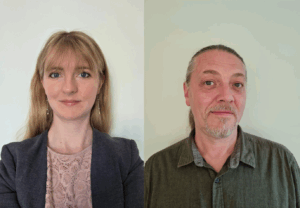
Jaro Tomik, Chief Technologist Digital Enablement - CDW LtdTrack 3
A lighthearted view of the buzzword of 2025: Agentic AI.
It's happening, whether you like it or not. We will cover what it means, why it's happening, look at how different vendors and non-ITSM departments approach it, consider its value to the business, explain why it's key to include it in your digital strategy, and discuss how its emergence will affect your colleagues in both positive and negative ways.
Please note: risk of Lord of the Ring references.

Details TBC soon.Track 4
Details TBC soon.
No workshops in this session.
Charles Bougon, Head of Service Operations & James Hollinworth, Sr Problem Manager - Direct Line GroupTrack 1
18 months ago, Problem Management at Direct Line Group was seen as slow, low-impact, and disconnected. We recognised the need for change and worked with stakeholders to understand what value they truly wanted.
With a refreshed team, we shifted our approach – embedding within engineering squads, improving communication, and ensuring a seamless flow from Major Incident into Problem. We focused on outcomes, not process, prioritising what mattered most to the business, our customers, and colleagues.
The change was clear. Problem Management is now seen as an enabler – a trusted partner for messaging, prioritisation, and long-term fixes. CSAT and engagement are high, and we’re now focused on proactive insight, reporting, and evolving our service to drive even more value.
Join us to learn about the journey.

Fiona Benoist, Director of Service and Platforms & Sarah Routledge, Service Design Manager - Irwin MitchellTrack 2
Until recently our IT configuration data was in disarray, information held in multiple systems and often duplicated or out of date.
Our CMDB was a list of assets, with no relationships between them. This caused business disruption and IT outages due to lack of visibility for change management and incident resolution. Recognising the need for change, we embarked on a transformative journey.
We formed a community of practice, undertook workshops and fact finding and identified use cases. We aligned business initiatives around a target operating model, capability mapping, Azure migration and ServiceNow Discovery, creating immediate value using the ServiceNow CSDM framework.
We replaced our legacy systems catalogue, started mapping application services and building views of services, which improved change assessments.
In this session we will describe our approach and the benefits of bringing clarity to our IT configuration data.

Details TBC soon.Track 3
Details TBC soon.
Tuuli Bell, Senior ESG Advisor - The ESG InstituteTrack 4
Consider this: AI-driven security systems were inspired by the human immune system's response to threats.
This is an example of biomimicry, one of many in the context of IT and business. With 3.8 billion years of research and development, nature offers profound insights for ITSM innovation.
This session examines how biomimicry can transform IT service delivery, infrastructure design, and sustainable operations. Through real-world examples, participants will discover how the principles of natural systems can enhance service resilience, optimise resource utilisation, and drive sustainable innovation.
From self-healing systems inspired by biological organisms to swarm intelligence for resource allocation, this session offers practical ideas for implementing nature-inspired solutions in ITSM.
Key questions…
1. How can natural systems' principles enhance ITSM efficiency and sustainability?
2. What practical biomimicry applications can transform service delivery models?
3. How might nature-inspired innovation reshape the future of ITSM?

Vawns Murphy, Principal Consultant - i3Works & Simone Jo Moore, Consultant, Evangelist & Rockstar!Track 1
The service desk is the most visible part of service delivery and yet they’re overworked, under funded and under appreciated.
This session will look at how to fall in love with your service desk again and offers practical solutions for dealing with common challenges - from tackling backlogs to improving engagement and beyond.

Lynda Cooper, Director/Consultant - Service 20000 LtdTrack 2
So many standards but which one will really help your organisation to work well, and improve and demonstrate their professionalism and quality to their customers?
Standards exist for so many topics - service management, information security, quality management, IT asset management, AI etc etc.
Lynda will help you to demystify these various standards and consider what they have in common, what makes them unique, how to choose one, and how they can be used together.
She will provide real-life examples to illustrate how various types and sizes of organisations use standards to their advantage and the benefits they gain from this.

Ben Clarke, IT Service Manager - Solidsoft ReplyTrack 3
What started as a small two-person service desk struggling to keep up with daily incidents has transformed into a fully-fledged, AI-powered cloud managed service operating across 28+ countries using Microsoft Azure.
Navigating the complexities of a highly regulated, GAMP-enforced pharmaceutical environment, we had to balance innovation with compliance, all while managing a centralised CAB and operating in a politically diverse, multi-national landscape spanning European LMICs (low and middle-income countries).
This session will take you on a real, raw journey of transformation, sharing hard-earned lessons on how we scaled from firefighting incidents to delivering:
* 24/7 incident, problem and change management in a complex, multi-jurisdictional environment;
* a centralised CAB that works – streamlining global change control while maintaining agility;
* GAMP-compliant service management – meeting strict pharmaceutical regulations without stifling innovation;
* automated monitoring and proactive alert – shifting from reactive firefighting to predictive service management;
* capacity and spend optimisation – managing cloud resources efficiently across diverse economic regions;
* scaling from two people to a fully managed global service – how we built a high-performing ITSM operation from scratch.

Rafal Czarny, Director of Innovation & Development - InprogressTrack 4
This session offers an invitation to discover how design thinking can easily revolutionise IT service management.
We'll present DTMethod, a structured design thinking methodology perfect for beginners, showing you how and where it can be applied even if you're just getting started in ITSM.
We will guide you through the process of exploring problems and challenges, engaging you in creative thinking and finding innovative solutions.
You'll learn how to easily create a service that addresses real user needs by testing ideas in a safe and iterative environment.

See you next year at ITSM26!
Phone: +44 (0) 118 918 6500
Ground Floor South
Burford House
Leppington
Bracknell
Berks RG12 7WW
Tel: +44 (0) 118 918 6500